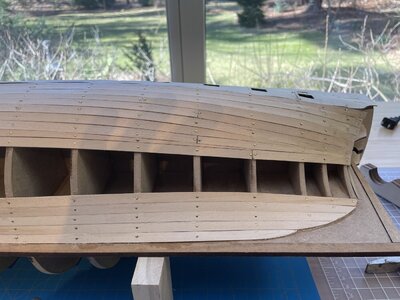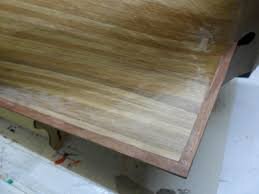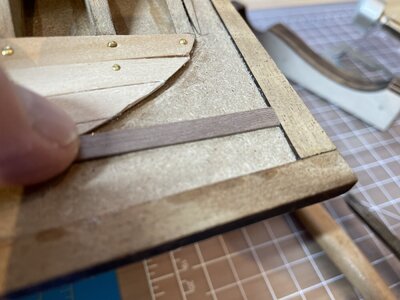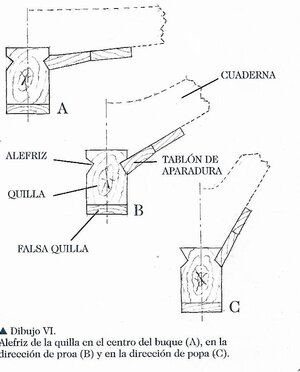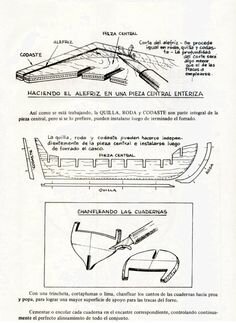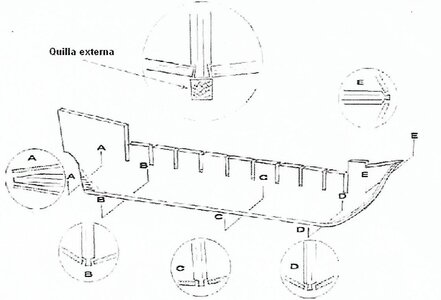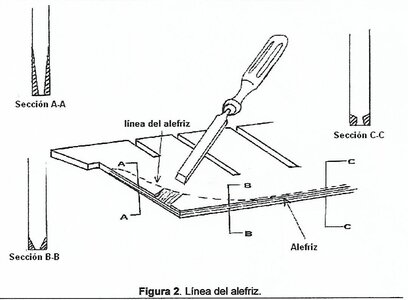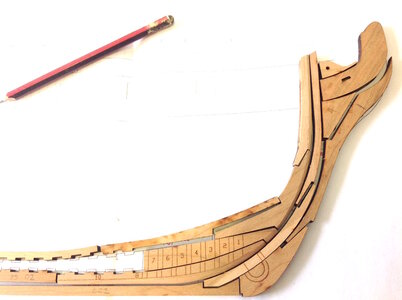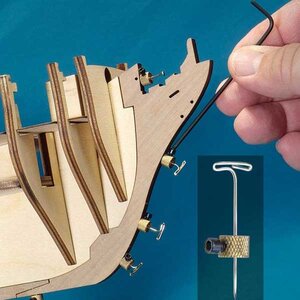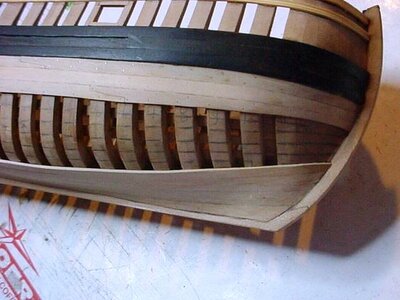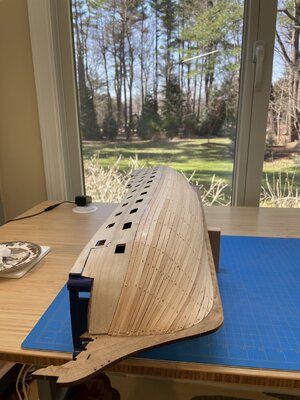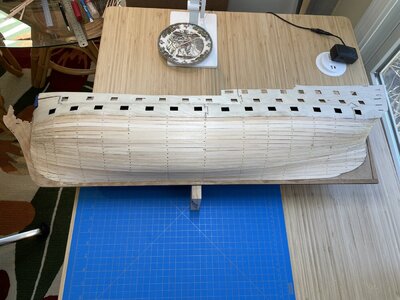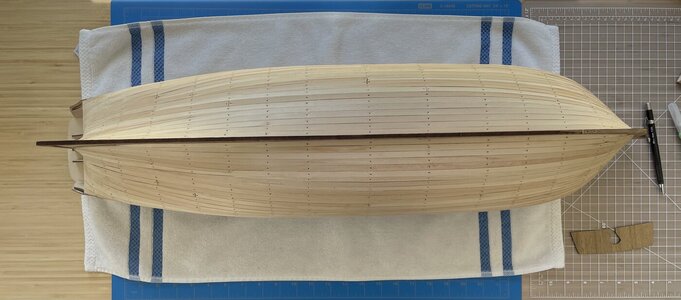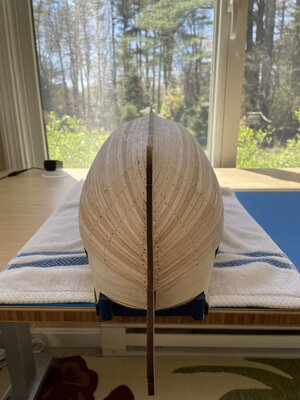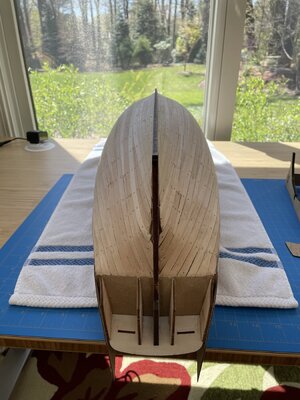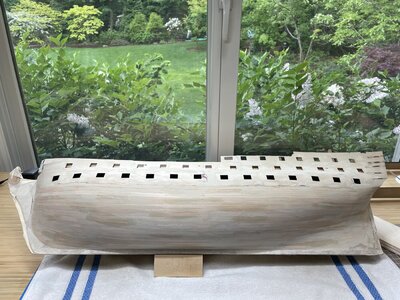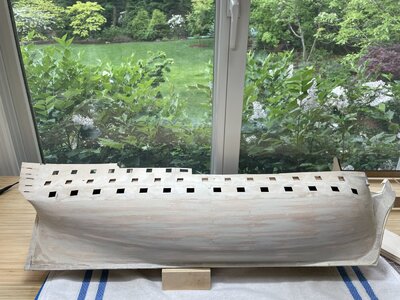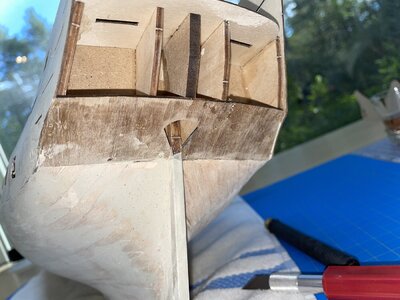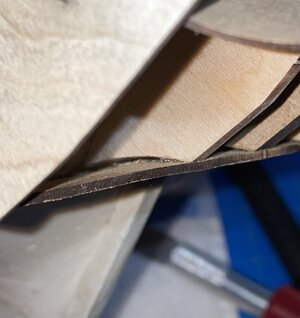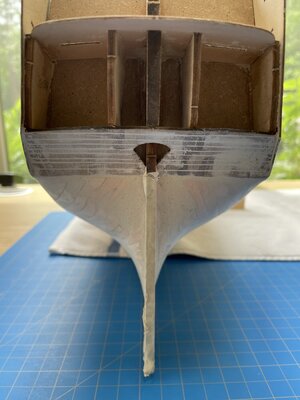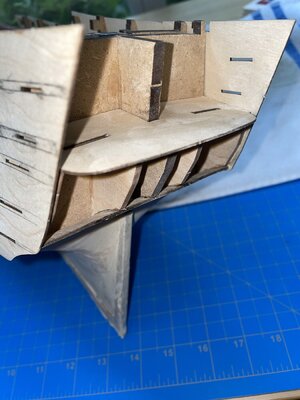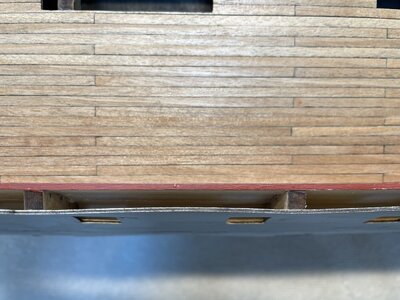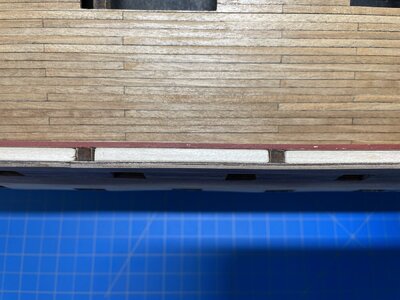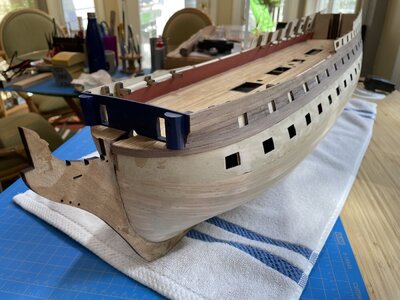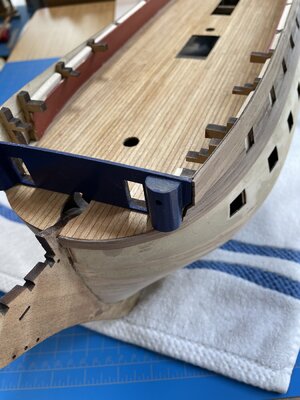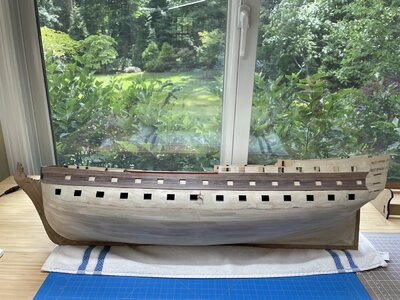View attachment 223952
Thanks, El Capi for the additional information on planking to the stern post. Since this is my first build, I am following the instructions I have on hand. Both the kit's instructions and Bob Hunt’s practicum instruct to cut the planks where the aft bulkheads meet the false keel. I believe this is because of the thickness of the two layers of planking. I did trim the false keel so that my second layer 0.5 mm walnut planks would be flush with the stern post. My false keel is 5 mm thick. Total thickness of my lime wood planks and walnut planks on both sides is 4 mm. If I were to trim the false keel to accommodate both layers of planking at the stern post, I would be left with a 1 mm thick false keel at the stern post. This seems to be too weak a section to attach the stern post. I have seen some builds where the first layer of planking goes to the stern post, but I don’t know how it’s done. Maybe the stern post is added after the first layer of planking is complete. In Bob Hunt’s practicum he uses wood filler to provide the smooth transition to the stern post.



